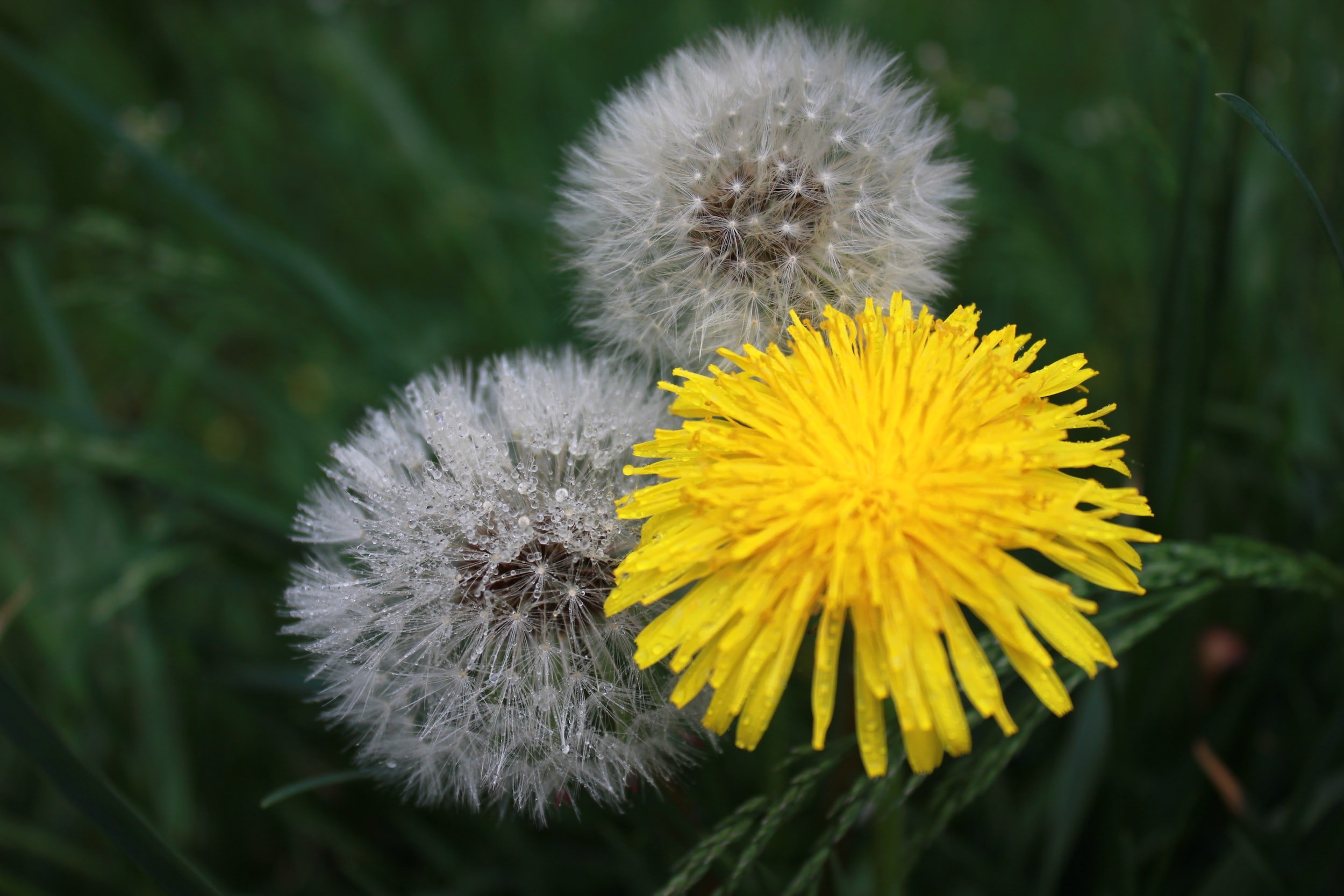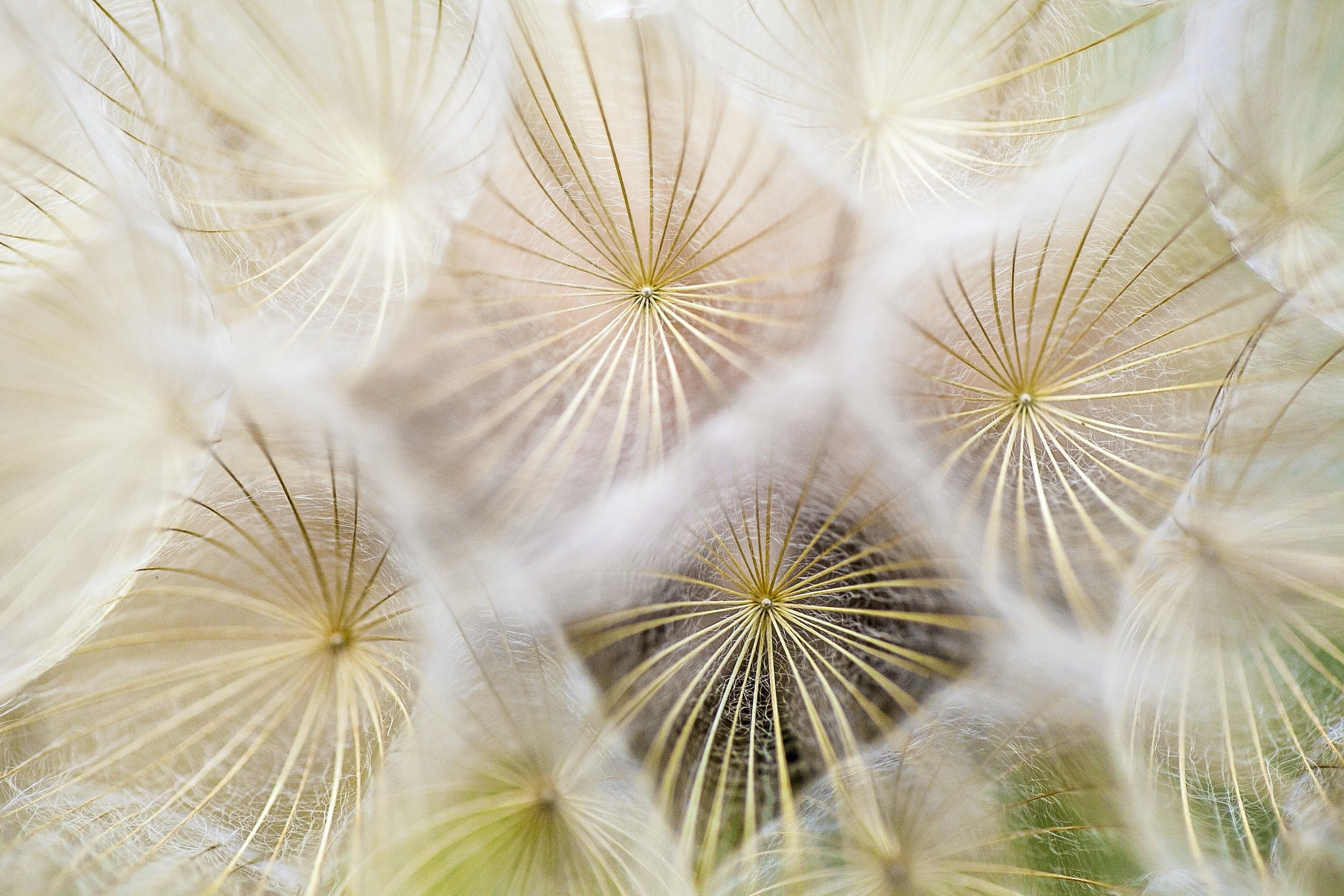
Dandelion
For April I’m focusing on the humble dandelion. Most of us step over it without noticing, or get angry when it shows up in our yard, but that sunny pop of yellow is a great plant friend. All parts are edible and it carries some intense medicinal benefits.
-

Dandelion Identification
Dandelion is in the Asteraceae (daisy) family and the genus Taraxacum officinale
-

Dandelion's Family
The Asteraceae or Daisy family, is one of the largest plant families and includes the daisy, marigold, sunflower, calendula, lettuce, artichoke and many more.
The common dandelion is native to the Mediterranean and spread to all of Eurasia and then on to every continent except Antarctica
Lesser populated varieties of dandelion are native to other parts of the world like the Horned Dandelion of North America
-

How to ID a Dandelion
Long taproot used to bring up nutrients for other plants
Leaves – grow in a rosette at the bottom of the stem. Large indents (like lion’s teeth)
Stem – hollow, usually has white liquid (lactucarium) inside
Flowers – hundreds of (usually yellow) ray-shaped flowers clustered into a head
-

History of Dandelions
Dandelion first appears in the earliest known medical book, a Chinese text called the Tang Bencao (materia medica) from 659 B.C.E.Texts from Arabian physicians in the 10th century show early uses Dandelion to treat to treat liver disease and digestion
-

Name and Usage
It’s name comes from the French, ‘Dent de Lion’ – for the ‘tooth of a lion’ referring to the toothed leaves
It was used to make yellow and purple colored dye (from the flower and stem) since the Middle Ages
-

Dandelions in North America
Dandelion was brought here to Turtle Island by colonists on the Mayflower. Dandelion was valuable because it grows plentifully for foraging, follows human use, and fills disturbed land without damaging native species. It was quickly adopted by Native groups who used it for a variety of health issues including stomach, kidney, and skin problems
-

Why Do We Hate the Dandelion?
Dandelion was loved and valued back when yards were filled with gardens and plants instead of grass
In the mid-1800s it became popular amongst the wealthy to have a grass lawn like the upper class in Europe, and quickly dandelions became unseemly
-

Dandelions in Cleveland History
In Michael Ruhlman’s book, House: A Memoir, he talks about how in the early days of Shaker Heights (a Cleveland suburb) the Italian women were considered a nuisance because they would come up the hill and sit on the lawns of the rich folks to pick dandelion greens and breastfeed their babies.
My great-grandfather loved dandelion greens and when I pass those big houses and see a spot of yellow on their lawn I like to think that maybe my grandmothers were there in another lifetime
-

Medicinal Dandelions
All parts (blooms, buds, stem, leaves, and root) of dandelions are edible and can be used a food and medicine. (I’ve been hoping this pink dandelion would show itself for dandelion month and it finally bloomed just a couple days ago!)
-

Dandelion Medicine
Dandelion has many medicinal properties but is best known to aid the liver and kidney as a blood purifier. It’s also excellent for the digestive system.
Dandelion has drying and cooling energetics (so it’s good to use if you have excess phlegm or when your body is running warm)
-

Dandelion Medicine
Dandelion helps with arthritis, constipation, detox, gallbladder, heartburn, kidney, liver, rheumatic pain, stomach and digestion
It works as an alterative, anti-lithic, bitters, carminative, diuretic, laxative, stimulant and tonic
-

Dandelion Spiritual Associations
Masculine energy, ruled by Jupiter (focus on material needs), air element. Used for Divination, wishes, and thinning the veil. Dandelion is also known as a harbinger of spring, and symbols of youth, resilience, hope, and overcoming adversity
-

Dandelion Symbolism
Represents the three celestial bodies, Sun, Moon, and Stars
In Japan they are called tanpopo and represent courage because of their ability grow anywhere
-

Dandelion Mythology
In Greek myth Theseus, the warrior-father of Athens, received the strength to defeat the mighty minotaur after the goddess of magic, Hecate, fed him dandelions for 30 days
Theseus and the Minotaur by Edward Burne-Jones (1861)
-

Dandelion in Native Stories
In an Ojibway story, the South Wind falls in love with Dandelion but leaves her to nourish the pollinators during the summer. When he returns Dandelion has grown old and he blows her seeds out onto the meadow for yellow heads to pop up the next year
-

Dandelion Magic
The seeds of a dandelion are believed to carry your thoughts and dreams to loved ones when you blow them into the air.
Find a good puffball and take a moment to calm and concentrate and then blow your wishes to be carried off to them.

